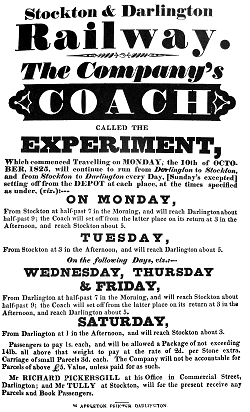

  |
6 December 2025 | Business Spotlight | Editorial Extra | News | Podcasts | About us | Home | 6 |
| Nineteenth century The Stockton & Darlington Railway was the first passenger line to be authorised by Act of Parliament, although it was mainly intended to carry coal.  Steam engines were used to haul coal wagons from the opening on 27 September 1825, but apart from a demonstration journey on the first day in which 400 people travelled in wagons, single passenger coaches as well as some coal trains were then drawn by horses until 1832-33. The first line built for passengers as well as goods and designed for steam engines from the start was the Liverpool & Manchester Railway, which opened in 1830. The openings of these early railways marked the start of a period of tremendous expansion. Although many lines were promoted and never built, by 1860 the networks in Britain and Ireland measured more than 16,000km between them. A Railway Clearing House was set up in 1842 to balance the accounts of the different companies where they carried through traffic from other lines. The RCH gained Parliamentary authority in 1850, when the first Railway Clearing Act was passed. Government controls
This near-monopoly caused the government to start regulating railway goods charges in the 1880s. Even so, most companies were profitable, but this period of prosperity came to an end when World War 1 broke out in 1914. The companies came under the control of an Executive Committee, and usual services were reduced so that they could carry wartime traffic. The next four years placed great strains, both mechanical and financial, on the railways. While the future of the industry was reviewed, the Railway Executive Committee continued to be in charge of the industry on behalf of the government. Some people, including Winston Churchill, speculated whether the time had come to nationalise the railways.   |
For all Railnews advertising call David Longstaff on +44 (0)1438 281210 |
Contact us Copyright statement Site map Terms and Conditions |